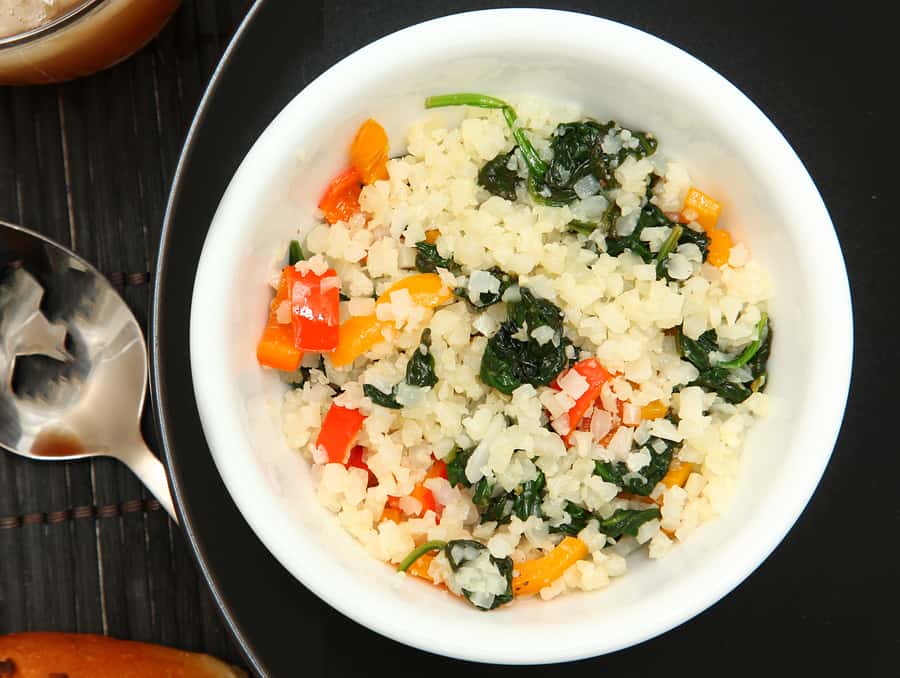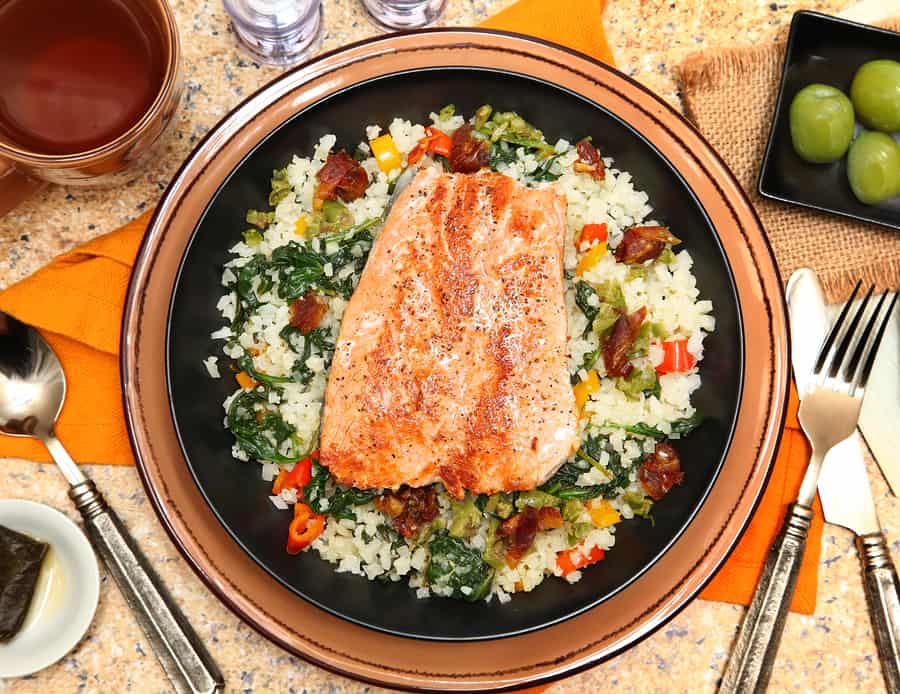The Whole30 Diet is an elimination diet – you eliminate categories of food that are known to be problematic to health for many individuals.
This allows you to find out which of these food categories don’t work for you.
Let’s talk more about the Whole30 diet – and let’s contrast with the Paleo diet. The two share a lot of similarities.
What is the Whole30 Diet?

The Whole30 diet is a challenging elimination diet that is meant to make us rethink food, discover our intolerances and allergies, and to develop better eating habits that remain once the program completes. It promotes and works around whole foods from multiple food groups, except grains.
It is not a fad diet or a lose weight quick scheme. In fact, the creators of the program encourage us to throw out our scale because feeling great about our bodies on the inside is not a number. You can choose to weigh yourself, but keep in mind this isn’t a weight loss diet.
The 30-day challenge is about increased energy, breaking bad eating habits, a properly working digestive system, and improved mental focus. We don’t count calories on the plan, and although the foods can be restrictive, we only remove foods for 30 days before slowing adding them back into our diets. Hopefully, by the end of the diet, we will have discovered the foods or types of food that make us feel run down or sick.
What are the potential benefits?
Everybody is different, but you might not realize how much your daily diet is affecting your health and health conditions unless you perform an elimination diet. Lowered blood sugar, improved triglycerides, and lower cholesterol are benefits many people see after completing it.
If you have a health condition, you might see improvements to many of your symptoms including pain. For me, with the help of my doctor, I tried an elimination diet; my eczema and plantar psoriasis saw vast improvements when I eliminated soy, dairy, and wheat-based foods.
Exercise is encouraged and combined with the 30-day plan; your body might become more defined and your lean muscle mass might increase too.
Weight loss is possible and a likely benefit because refined and unrefined sugar isn’t allowed. You’re also eliminating other foods that can lead to extra pounds if your body isn’t properly digesting them. Any time I have gone on a program that eliminates sugar, I’ve personally dropped at least five pounds or more. Those pounds stay off until added sugars creep back onto my plate on a regular basis.
How does the diet work?

Aside from restricting sugar, the plan eliminates several types of food and alcohol of any type. Some foods we’re not allowed to eat during the 30 day challenge are artificial sweeteners, grains, most legumes/beans, most dairy products, junk foods with or without ingredients that are allowed on the diet, and processed meats.
Instead of concentrating on what we cannot eat, let us look at what foods it allows.[1] Remember, we don’t worry about the calories, but we do focus on whole, healthful foods.
What we can eat:
- Meat, eggs, and fish in normal portion sizes. The plan doesn’t require you to trim fat or specify only the lean meats.
- Most fruits in their whole, unprocessed form, however, we do avoid the sweetened dried versions.
- Many vegetables, including green beans, sugar snap peas, and snow peas make our list. These three might technically be legumes, but the plan lets us consume them since we eat the pod too.
- Potatoes, including white and sweet, are approved too. While this is technically under the vegetable section, I felt it needed its own highlight since so many diets have you ignore the health benefits of potatoes.
- Natural fats, like avocado, coconut oil, and extra-virgin olive oil, make the omnivore-shopping list.
- Clarified butter is one dairy product allowed.
- Fruit juice in recipes that need a little sweetness or when used in tea or coffee as a sweetener are okay.
- Vinegars, salt, spices, and coconut nectars make the approved list.
Criticisms of the Whole30 Diet
Any diet or eating program receives negative views from nutritionists, scientists, doctors, and the public. One problem I see with many of the opinions is their wording. I’ve read it’s a weight loss fad diet, which it can’t be since it’s not truly about losing weight. This makes it difficult to find an informed critic from a reputable source, but they do exist.
Live Science considers the Whole30 Diet as both a fad diet and a modified version of the Paleo Diet, but it is neither.[2] The Paleo Diet might also eliminate grains and sugar, but it’s a lifestyle that focuses on clean eating, grass-fed, free range meats and organ meats, allows for far more food choices, promotes exercise and weight lifting as much as the food we eat, and can include intermittent fasting.

They also show considerations for an unbalanced diet or nutritional deficiencies by following it, but Live Science and other nutritional critics provide no scientific data to back their claims.[2][3] This is because no data exists. In addition, the diet only lasts for 30 days, which isn’t long enough for these problems they mention to develop in the first place.
Claims of it being unsustainable are a moot argument since it’s not meant to last longer than a month. However, that is another common argument among critics.[2][3][4]
Additional Thoughts and Findings on the Whole 30 Diet
When researching and trying this 30-day plan (I have used it a few times in the past to reset my sugar addiction), I found that sugar and artificial sweeteners are sneaky and goes by multiple names. You really need to focus on food labels and read ingredients for every item and every time you buy it because the ingredients can change.
The plan does allow for vegans, vegetarians, and those who are nightshade free to participate in the plan.[5]
You should consult a doctor before trying the Whole30 and any diet or exercise program, which many of the critics assume people don’t do.
Remember, the Whole 30 Diet is not a fad diet, but a way to reset your system and pinpoint troublesome foods. You will likely lose weight, and if you continue to be mindful about the foods you eat, you will likely lose more or maintain your weight. Most of all, you will gain a new perspective on food as nourishment for your whole body.
References
1. https://whole30.com/downloads/book-shopping-list.pdf
2. https://www.livescience.com/49276-whole-30-health-claims.html
3. http://www.berkeleywellness.com/healthy-eating/diet-weight-loss/article/whole30-healthy-or-hokum
4. https://www.mayoclinic.org/healthy-lifestyle/weight-loss/in-depth/the-truth-behind-the-most-popular-diet-trends-of-the-moment/art-20390062
5. https://whole30.com/pdf-downloads/


Tim is the founder of FitAtMidlife.com – an avid gym rat for 30+ years, he’s a reviewer of many, many shoes – and founder of the Speed Bag Gathering – the world’s only gathering of speed bag punching enthusiasts. See more gym reviews at Tim’s YouTube channel.
